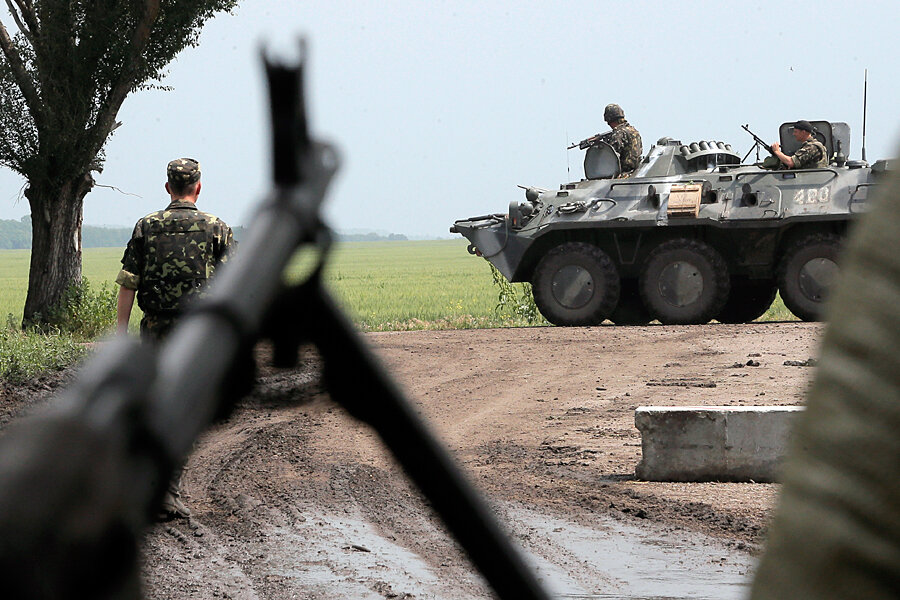Despite Russian drawdown from border, fighting continues in eastern Ukraine
Loading...
A daily roundup of terrorism and security issues.
Most Russian troops have withdrawn from Ukraine's border, US officials said today, a move long demanded by Ukraine and the West. But there are strong indications that Russian fighters are battling alongside separatist rebels against government troops in eastern Ukraine.
According to unidentified US defense officials, only seven Russian battalions, consisting of a few thousand troops, are positioned near the border with Ukraine, down from roughly 40,000. The Associated Press reports that while US Defense Secretary Chuck Hagel did not confirm the troop numbers, he did say that it was taking place, if incomplete.
“They are not where they need to be and won’t be until all of their troops that they positioned along that border a couple of months ago are gone,” Hagel said.
“We do know that thousands of Russian troops have been pulled back and are moving away. But we also know that there are still thousands of Russian troops still there that have not yet moved,” Hagel said.
The withdrawal of Russian troops would be a major step towards easing tensions between Moscow and the West over Ukraine. Their presence has rattled Kiev, Europe, and the US; rebels in the self-proclaimed republics of Donetsk and Lugansk have called for Russia to send troops and annex the region, as they did in March with the Crimean peninsula. Western powers say any such move would trigger a new round of sanctions on Russia, possibly targeting whole sectors of industry.
But while the Russian military appears to be rolling back, there are increasing signs of Russian involvement among the rebels on the ground in the east. Russian state news agency RIA Novosti reported yesterday that of some 50 rebels killed in fighting with government troops Monday, 33 have been identified as Russian nationals. A member of the Donetsk separatist faction said that the bodies of the 33 were being returned to Russia for burial.
And Agence France-Presse writes that a heavily armed brigade of Chechen and other Russian militants from the Caucasus arrived in Donetsk recently. The troops reportedly evicted a dozen local rebels from their headquarters and took it for themselves. The Daily Telegraph adds that the new militants' arrival and seizure of the headquarters has raised speculation about a coup within the rebels' ranks, though rebel leaders deny it, and say the change was necessary to stop criminal activity.
Coup or not, the Telegraph notes that "The open admission of the presence of foreign fighters marks a remarkable change of tune from the separatist leadership, which previously maintained that its forces were entirely made up of locals." Rebel leaders claim that the Russian fighters killed earlier this week were all volunteers. It is not clear whether they claim the same of the latest arrivals; Chechen President Ramzan Kadyrov denies having sent any soldiers to Ukraine.
The separatist forces are adopting tactics that will make them harder for the already disadvantaged Ukrainian military to deal with. Bloomberg reports that despite President-elect Petro Poroshenko's claim that the anti-terrorist operation in the east "shouldn’t last for months – it should take a few hours," the rebels are using guerrilla hit-and-run and "civilian shield" tactics that could mean a protracted conflict.
Some of them established city strongholds such as Slovyansk, where the proximity of civilians hinders the advance of government forces. Others move from town to town. If they’re not killed or captured in firefights, they flee before popping up elsewhere, sometimes within hours. ...
“These tactics split government forces and make maneuvers trickier -- the separatists are exploiting our weaknesses,” said Mykola Sungurovskyi, head of military programs at the Razumkov Center in Kiev. “Poroshenko is too optimistic. Even under favorable conditions, the operation would take a month.”








